Managing Dental Erosive Tooth Wear: Current Understanding and Future Directions
Course Number: 517
Course Contents
Professional Care
Oral health education and advice must be individualized. In addition to recommending the use of stannous fluoride dentifrices, preventive care can include fluoride varnishes. Tooth surface protective coatings may also be indicated and dentinal hypersensitivity requires treatment or use of a desensitizing toothpaste (e.g., stannous fluoride). If intrinsic acid erosion is present (e.g., from GERD or bulimia), the patient should be referred for appropriate medical assessment and care. Restorative and bonding materials are only used if absolutely necessary to reduce sensitivity, improve esthetic considerations or restore function. For non-carious cervical lesions (NCCLs), it may be preferable to avoid restorative care, particularly for early lesions. (Figure 10).Patients should be given advice on simple, practical ways to reduce the risk of erosive tooth wear such as dietary advice and modifying habits. Table 8 contains a list of areas to consider when tailoring patient advice. Regular reassessment and monitoring are needed to determine if ETW has been halted and to provide patients with advice and care.
Table 8. Individually Tailored Advice for Patients.
| Dietary Considerations for Sharing with Patients. |
|---|
| Reduce intake and frequency of acidic foods and drinks. |
| Eat cheese/milk after acid challenges. |
| Additional calcium content in food and beverages. |
| Drink cold rather than warm beverages (if acidic). |
| Rinse with sodium bicarbonate to help increase the pH after dietary acid challenges. |
| Chew nonacidic gum to stimulate saliva. Mint-flavored, sugar free gum should be suggested rather than citrus flavored gums, which are likely to be more acidic. |
From the patient standpoint, probably the biggest area of concern is for those individuals with a high intake of acidic beverages and snacking on acidic fruit . For those individuals, the recommendations are rather straightforward. (Table 9) The first recommendation is to try to minimize the excessive intake of these beverages and fruit, as the pellicle can certainly accommodate some level of intake without issue. When consuming these types of beverages, it is generally considered best to drink with a straw, as this helps direct the acids past the teeth and into the mouth directly. Recommend drinking acidic beverages in a short period of time in order to minimize the overall time of contact of the acids with the enamel surfaces. Rinsing with water after drinking an acidic beverage or fruit will help dilute acids and rinse them away from susceptible tooth surfaces. There is some belief that drinking chilled beverages may be more advantageous, from the standpoint of erosive potential, than drinking warm beverages; as the reduced temperature may favorably alter the kinetics associated with erosive acid attack and the resulting insult to the enamel surface.47 It is probably best to advise patients to wait 1-2 hours after ingesting acidic products before brushing; and when they do brush, it is best to use a stabilized SnF2 dentifrice that has been demonstrated effective in its ability to help protect against erosive acid damage.
Table 9. Awareness for Patients who Ingest Excessive Amounts of Erosive, Acid Containing Beverages.
| Erosion Awareness for Patients with High Intake of Acidic Beverages. | |
|---|---|
| Avoid excessive use of acid beverages. | 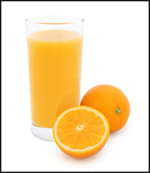 |
| Use a straw. |  |
| Drink acidic beverages in a short period of time. | 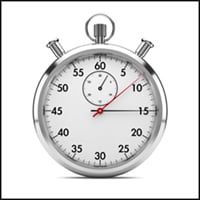 |
| Rinse with water after drinking to minimize exposure. |  |
| Cold beverages are probably better than warm ones. | 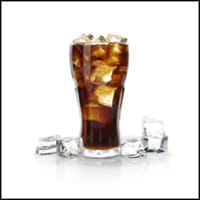 |
| Wait 1-2 hours after ingesting acidic products before brushing. |  |
| Brush with a stabilized stannous fluoride toothpaste. | 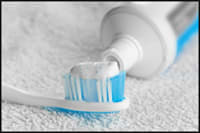 |
From the professional standpoint, there are a few key points to consider (Table 10). Clearly, consumer trends are creating new dental needs. Dental health is a constantly evolving issue, and one that requires an eye toward the future to help stop problems before they get to epidemic levels. Based on a host of information available from studies conducted in the UK and Europe, as well as initial studies done in the United States, dental erosion is clearly one of the next big trends that is emerging and will require dental intervention. Due to the irreversible nature of dental erosion, this may ultimately be a bigger issue than caries. Caries formation is a reversible process that does not involve, at least in the early stages, total destruction of the enamel crystal matrix. Of primary importance in controlling dental erosion is the recognition and appreciation for preventive measures to be put in place at the earliest ages, in order to preserve the natural enamel surface as long as possible. Particularly important is the transition stage from deciduous to permanent dentition, where patients need to be reminded of the long-term need to maintain strong, healthy teeth for life.
Table 10. Key Areas of Erosion Awareness for Dental Professionals.
| Erosion Awareness for Professionals. | |
|---|---|
| Consumer trends are creating new dental needs. |  |
| Dental erosion is an emerging trend. |  |
| Maintaining strong, healthy teeth for life begins at the earliest ages. | 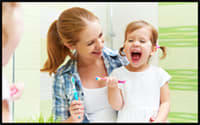 |
| Dental erosion is irreversible. | 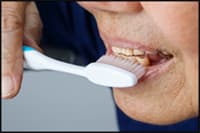 |
| Fluoride provides some protection from erosion, but all fluorides are not equally effective. | 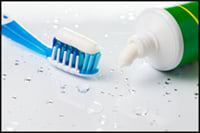 |
| SnF2 is recognized as being highly effective in the prevention of dental erosion. | 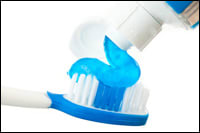 |

